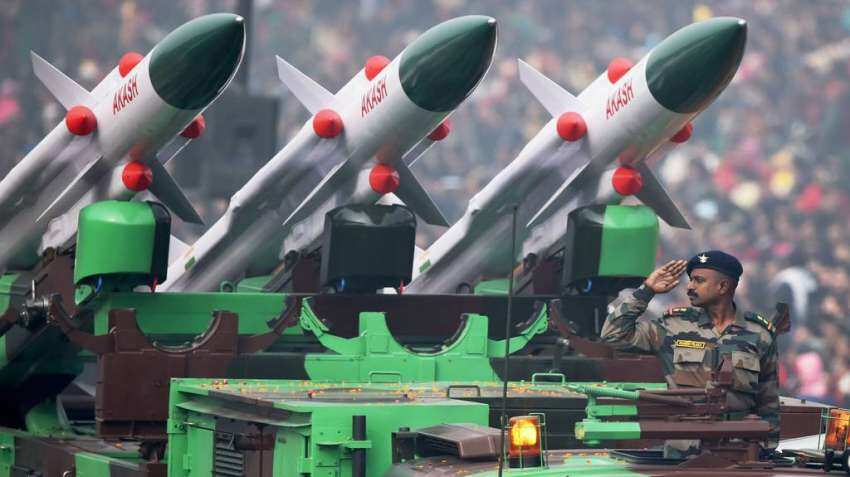After the Defence purchase Council (DAC) approved Acceptance of Necessity (AoNs) for eight capital purchase bids totaling more than Rs 54,000 crore, defence stocks jumped as much as 6% on Friday. These clearances include important purchases for the Army, Navy, and Air Force with the goal of bolstering the Indian Armed Forces. Following DCX Systems, which gained 5% to Rs 251.40, Bharat Dynamics (BDL) shares saw the biggest increase, surging 5.6% to an intraday high of Rs 1,317 on the BSE. BEML’s stock, meanwhile, increased 4.8%. While shares of Bharat Electronics (BEL), Hindustan Aeronautics (HAL), and Cochin Shipyard increased by 1% to 2%, Paras Defence and Space Technologies’ shares surged by 2.5 percent.
To replace the current 1,000 HP engines in T-90 tanks, the DAC authorized the purchase of 1,350 HP engines for the Indian Army. By improving the tanks’ power-to-weight ratio, this modification is anticipated to increase battlefield mobility, especially in high-altitude regions. The council approved the purchase of Varunastra torpedoes, a ship-launched anti-submarine weapon created in India and created by the Naval Science, for the Indian Navy.
Quicker Procurement Procedure to Reduce Wait Times
The Defense Ministry is enacting changes to expedite the procurement process in addition to authorizing new military acquisitions. India’s defense acquisitions have long been beset by bureaucratic hold-ups; previous agreements such as that for Rafale jets and Scorpene submarines have had protracted timetables. The ministry wants to cut the average acquisition time under the new criteria from 96 weeks (two years) to just 24 weeks (six months). According to at least three senior officials who spoke to Hindustan Times, “the defense ministry wants the laborious capital acquisition procedure, which is governed by a voluminous Defence Acquisition Procedure (DAP) manual, running into 657 pages across two volumes, to be made more efficient so that acquisition of much-needed platforms is not delayed.”
A number of adjustments are being made in order to meet this increased schedule. The first significant change mandates that the military draft the Request for Proposal (RFP) concurrently with obtaining Acceptance of Necessity (AoN) for any acquisition. In the past, needless delays resulted from the RFP process starting only after AoN approval. Another laborious stage, field evaluation trials, will also be redesigned. Because the equipment had to be tested in both polar and desert environments, these trials used to take years. The ministry now wants to test in simulated conditions in order to expedite the procedure. There will also be a tight deadline for contract discussions. Now, the Contract Negotiation Committee (CNC), which works with suppliers to finalize prices, will have no more than six months to finish the process. This move aims to prevent drawn-out price negotiations, which have slowed down significant defense acquisitions in the past.
The agreement will swiftly proceed to the Prime Minister’s Cabinet Committee on Security (CCS) for final approval after the finance ministry has cleared the negotiated price. There is more to the defense ministry’s drive for quicker purchases than merely speed. Additionally, the government wants the procurement process to be more accountable. The possibility of cost increases is one of the main problems with delays. Reforms are intended to “hold both the armed forces and the ministry accountable in case the price of the platform changes due to delays,” according to one source. Protracted discussions have occasionally resulted in price rises and logistical difficulties for significant defense contracts throughout the years, including those for Rafale aircraft, Predator drones, and more Scorpene-class submarines. The administration hopes to guarantee that vital platforms reach the armed forces without needless delays by imposing stringent deadlines and parallel processing of crucial stages.

